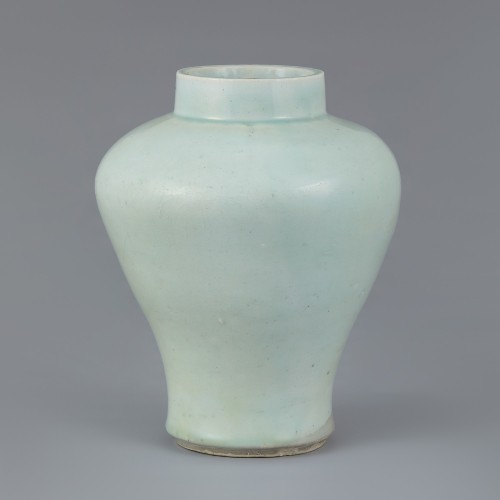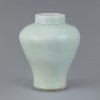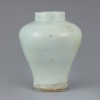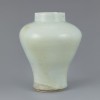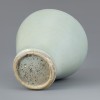본문
조선시대에 제작된 백자호는 절제된 형태와 은은한 광택이 특징입니다.
이 유물은 수직으로 짧게 뻗은 구연부를 지나, 어깨에서 가장 넓은 지름을 형성한 후 매끈하게 저부까지 이어져 안정적인 비례감을 보여주는 것이 특징입니다.
장식 요소 없이 순백의 유약을 사용하여 백자의 단정하고 고요한 아름다움이 드러납니다. 이러한 절제된 형태미는 조선 유교 문화의 정신성과 미학을 반영합니다. 백자호는 의례용, 장식용, 일상용 등 다양한 용도로 사용되었습니다.
이 백자호는 하단부의 옅은 색 변화와 표면 곳곳의 점, 빙렬 등이 어우러져 단조롭지 않게 자연스러운 미감을 자아냅니다. 즉, 균일하지 않은 유약 흐름과 우연히 형성된 흔적들은 오히려 역동적인 아름다움으로 작용해 조선 백자의 소박한 미의식을 잘 보여줍니다. 굽바닥을 살펴보면 굵은 모래받침이 남아있음을 확인할 수 있습니다.
간결하고 기품 있는 외형을 통해 조선 백자의 높은 완성도를 확인할 수 있으며, 당대 도자 공예의 수준을 잘 나타내는 자료로 여겨집니다.
조선시대 백자는 순백의 유약과 절제된 장식을 통해 청렴한 미의식을 구현한 것이 특징입니다.
━━━━━
朝鲜时代制作的白瓷壶,以简约的造型与温润的光泽为其主要特征。
此器物直颈,丰肩,肩以下渐收至底部,展现出稳定且协调的比例美。
通体未加任何装饰,施以纯白釉色,突显了白瓷端庄、宁静的美感。这种克制的造型美体现了朝鲜儒家文化所强调的精神性与审美理念。白瓷壶广泛用于礼仪、装饰及日常生活等多种用途。
此件白瓷壶下部可见淡淡的色彩变化,表面散布着自然形成的斑点与冰裂纹,使整体观感不显单调,反而呈现出一种自然流露的美感。釉面不均的流动痕迹与偶然留下的印迹,更增添了动感的美,展现出朝鲜白瓷所特有的朴素美意识。翻观壶底,可见粗砂垫烧的痕迹仍然清晰保留。
整体造型简洁而高雅,体现了朝鲜白瓷高度的完成度,也反映出当时陶瓷工艺的卓越水准。
━━━━━
This White Porcelain Jar from the Joseon Dynasty is notable for its restrained form and subtle luster.
The jar features a short, vertically rising mouth, a wide shoulder that forms the vessel’s broadest point, and a smoothly tapering body that extends to the base—exhibiting well-balanced proportions.
Free of decorative elements and finished with a pure white glaze, the jar reveals the serene and composed beauty characteristic of Joseon white porcelain. Its understated form reflects the spiritual and aesthetic ideals of Confucian culture during the Joseon period. Such jars were used for a variety of purposes, including ritual, decorative, and everyday use.
The faint color variations near the base, along with surface specks and crackles, create a natural and uncontrived visual appeal. Rather than being seen as flaws, the irregular glaze flow and incidental marks enhance the piece’s quiet dynamism, reflecting the modest yet refined aesthetic sensibility of Joseon porcelain. A thick sand support ring is still visible on the foot of the jar.
With its elegant and dignified form, the jar attests to the high level of craftsmanship achieved in Joseon white porcelain and serves as an important example of the period’s ceramic artistry.
